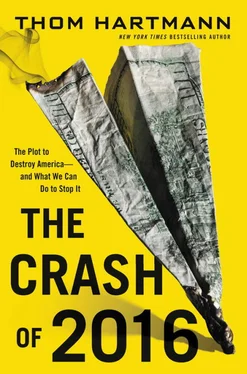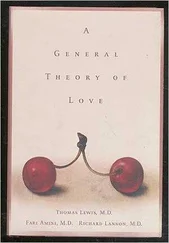The argument against government jobs programs during a time of recession is that they require deficit spending. Government deficits, it is said, are bad things that ultimately do bad things to economies.
Let’s face it, however: That’s a simple fallacy. When governments borrow money, they issue bonds. People in the private sector want a place to put their money that will return a reasonable interest rate on their investment and is supersafe. Government bonds fill that need. In fact, it would be safe to say that government deficits, in large part, simply represent private-sector savings. And the private sector needs a safe place to put its money.
Another strategy to produce the revenue for governments to become the employer of last resort is to simply issue the money. Our Constitution gives Congress this power. And a growing number of economists, led by Professor Stephanie Kelton, at the University of Missouri in Saint Louis, and Dr. Steve Keen, in Australia, are suggesting that during times of severe economic crisis a government should do just that.
The main argument against simply printing money is that it would depreciate the country’s money supply, thus producing inflation. But this type of devaluation of currency inflation is extremely rare. So long as the government is only printing enough money to get employment up to full employment, or something close to it, these modern monetary theorists say there will be no inflation.
Instead, they say that inflation is caused by shortages. In the 1970s in the United States there was a shortage of oil caused by the Arab oil embargoes. Because oil is so intrinsic to so many parts of our economy, that caused shortages, and the resulting increase in the price of oil led to inflation.
Similarly, in Zimbabwe, when President Robert Mugabe took away farmland from farmers and passed it out to his cronies, most of them had no farming expertise. Because they didn’t know how to farm, the crops failed, and there was a countrywide food shortage. The shortage of food drove up the price of food, which produced a general inflation, which devastated their economy.
In fact, the United States regularly brings money into being from nothing. During the banking crisis of 2008–09, the Federal Reserve created tens of trillions of dollars out of thin air, and distributed it to banks, corporations, and even wealthy individuals worldwide. It produced no inflation.
In general, with fiat currencies like we have here in the United States, the money supply should expand or contract to reflect the overall size of the economy. So when money is brought into being to put people back to work, and when those working people are now expanding the economy, that “printed” money is not inflationary. And by putting people back to work, the government ends the depression.
The largest of the economic dislocations of the post-Reaganomics era has been in the area of debt. As productivity has climbed since 1980, wages have remained flat, and enormous profits have gone to corporations, with fat paychecks going to their CEOs and stockholders. But workers have seen no gains, so they’ve had to turn their homes into ATMs, rely on their credit cards, and have their children take out student loans. Debt has exploded.
While government debt in the United States is in the neighborhood of $15 trillion, private-sector debt is over $40 trillion. This is absolutely unprecedented for our nation, and will make it very difficult to climb out of the hole that the Great Crash of 2016 will cause.
Unwinding this debt will be one of the largest challenges our government will confront. And one tried-and-true method to unwind debt is called a “debt jubilee.”
The biblical jubilee happened every fifty years, when all the wealth was distributed evenly to everybody, and all the slaves were freed. A debt jubilee would have to be much more selective.
For example, we currently have over $1 trillion in student loan debt in the United States. Arguably, none of this debt should ever have been run up. College education is free in most developed countries, and it used to be free in much of the United States. So if the government were to simply take that $1 trillion in debt and wipe it out, it would go a long way toward saving working-class America and our economy.
Housing debt is a bit more complex, but FDR created what was, in effect, a housing-debt jubilee in the 1930s. He created a government agency that bought up people’s distressed mortgages, and rolled them over into thirty-year, low-interest, fixed-rate loans. By the time the last of these loans were paid off in the 1960s, the federal government had actually shown a profit on the program. And while it didn’t much help the banksters, it saved millions of American homeowners.
Since the banking crisis of 2008, our federal government has been largely playing the same role, only for the mortgage companies instead of the consumers. Over 95 percent of all new mortgage debt in that time has been backstopped by the federal government. It would be much more efficient to take the bankers out of the equation, and for the government to simply become the lender of last resort for its citizens, just like it should be the employer of last resort.
And finally, after the Crash of 2016, it’s time we as a nation have a serious discussion about outlawing billionaires.
Just ahead of the Great Crash, the wealthiest one hundred people in the world had a combined net worth of $1.9 trillion—making them wealthier than the entire GDP of nations such as Italy, Mexico, Spain, Canada, Australia, and about 170 other nations.
This is the economy we got when Ronald Reagan and the Royalists drastically slashed taxes on the superrich in the early 1980s.
But just as we learned during the Gilded Age and the Crash of 2016, it’s impossible to build a healthy, stable economy on the backs of a few billionaires.
That’s because billionaires are not job creators; they are somewhere between symbionts and parasites. That’s not meant as a personal insult against billionaires, many of whom are decent people. But it’s meant as a statement of common sense. If vast fortunes are being hoarded in the hands of very few people who can’t possibly spend that much money in their lifetime or their kids’ lifetime or even their kids’ kids’ kids’ kids’ lifetime, then it’s essentially being wasted.
This is the point billionaire Nick Hanauer was making in his recent TED talk 187explaining why rich people aren’t job creators. As he said, “There can never be enough superrich Americans to power a great economy. The annual earnings of people like me are hundreds, if not thousands, of times greater than those of the median American, but we don’t buy hundreds or thousands of times more stuff.”
If the four hundred richest billionaires in America could generate just as much economic activity alone as the rest of us can, then maybe there’d be an argument for such vast wealth. But they can’t. The typical billionaire doesn’t buy thousands more pairs of pants, or dine out thousands more times, or buy thousands more cars than the typical working-class American.
Hanauer concludes, “I can’t buy enough of anything to make up for the fact that millions of unemployed and underemployed Americans can’t buy any new clothes or cars or enjoy any meals out. Or to make up for the decreasing consumption of the vast majority of American families that are barely squeaking by, buried by spiraling costs and trapped by stagnant or declining wages.”
Imagine walking into a classroom of kindergarteners and finding that just one kid is in possession of nearly all the toys. Just one kid has thousands of toy cars, army men, and building blocks piled up like Scrooge’s money bin, filling half the classroom; one or two of the kids have a dozen or so toys; and the rest of the class of kids have to share just one dinky, old rag doll. No one could possibly think that’s a healthy way of distributing toys to a kindergarten class. That one kid couldn’t even play with all his toys.
Читать дальше












